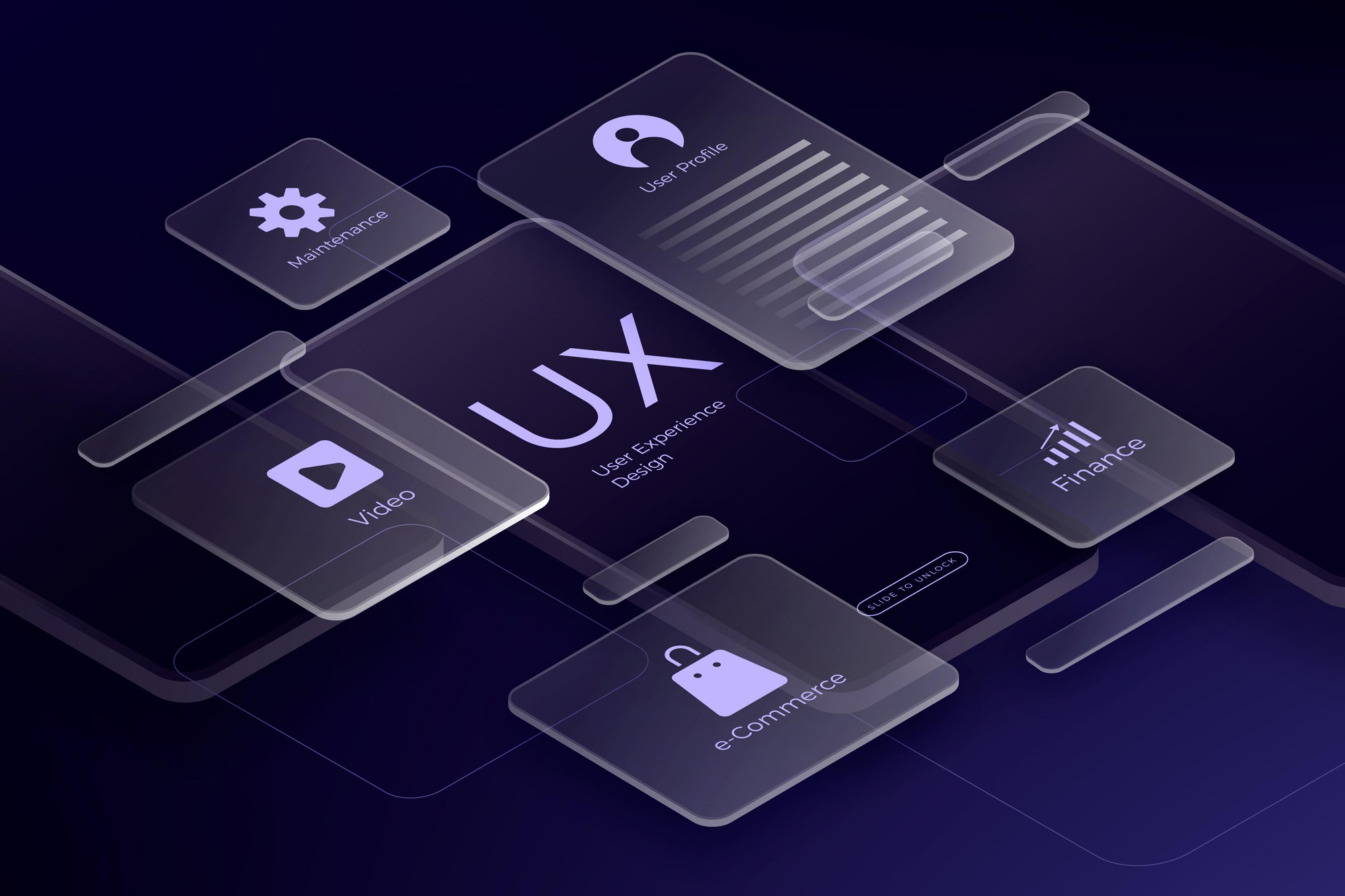
In the ever-evolving landscape of web design, staying abreast of the latest trends is paramount to creating engaging and innovative digital experiences. As we delve into 2025, several trends have emerged, reshaping the way websites are designed and experienced. In this blog post, we’ll explore some of the most prominent trends, including the integration of 3D graphics, the widespread adoption of dark mode, and what lies beyond these current trends.
Latest Trends in Web Design
In the dynamic world of web design, staying abreast of the latest trends is not just a best practice; it’s essential for creating compelling and impactful digital experiences. As we navigate through the current landscape of web design, several trends have emerged, shaping the way websites are conceptualized, designed, and experienced. From the integration of cutting-edge technologies to the evolution of design aesthetics, the latest trends in web design reflect a blend of innovation, functionality, and user-centricity.
At the forefront of these trends is the integration of three-dimensional (3D) graphics, which has revolutionized the way websites engage and captivate audiences. With advancements in technology and browser capabilities, designers now have the tools to create immersive and interactive 3D experiences that were once reserved for native applications or gaming platforms. From dynamic product showcases to interactive storytelling, 3D graphics add depth, realism, and interactivity to web environments, elevating user engagement and retention to unprecedented levels.
Accompanying the rise of 3D graphics is the widespread adoption of dark mode, a design trend that has transcended its niche origins to become a mainstream feature embraced by major platforms and applications. Offering a sleek and modern aesthetic, dark mode not only reduces eye strain in low-light environments but also conserves battery life on devices with OLED displays. Web designers are increasingly incorporating dark mode options into their websites, providing users with greater control over their browsing experience while making a bold design statement that conveys sophistication and elegance.
- 3D Graphics and Interactivity:
One of the most captivating developments in web design is the integration of three-dimensional (3D) graphics. With advancements in technology and browser capabilities, designers are now empowered to create immersive experiences that were once reserved for native applications or gaming platforms.
From dynamic product showcases to interactive storytelling, 3D graphics add depth and realism to web environments, elevating user engagement and retention. Utilizing libraries such as Three.js or WebGL, designers can seamlessly integrate 3D models, animations, and effects into their web projects.
- Immersive Experiences: Advancements in technology have enabled the integration of three-dimensional (3D) graphics into web design, creating immersive experiences previously limited to native applications or gaming platforms.
- Dynamic Product Showcases: Brands are leveraging 3D graphics to create dynamic product showcases, allowing users to interact with products in a more engaging and realistic manner.
- Interactive Storytelling: Websites are incorporating 3D animations and effects to enhance storytelling, captivating audiences with visually compelling narratives.
- Augmented Reality (AR) and Virtual Reality (VR): The proliferation of AR and VR technologies has expanded the possibilities of web design, enabling immersive experiences accessible directly through web browsers.
- Dark Mode:
Dark mode, once considered a niche feature, has now become a mainstream design trend embraced by major platforms and applications. Offering a sleek and modern aesthetic, dark mode not only reduces eye strain in low-light environments but also conserves battery life on devices with OLED displays.
Web designers are increasingly incorporating dark mode options into their websites, providing users with greater control over their browsing experience. By implementing CSS media queries or JavaScript toggles, websites can seamlessly transition between light and dark themes based on user preferences or ambient light conditions.
- Sleek Aesthetic: Dark mode offers a sleek and modern aesthetic, reducing eye strain in low-light environments and conserving battery life on devices with OLED displays.
- User Preference: Websites are providing dark mode options, allowing users to toggle between light and dark themes based on their preferences or ambient light conditions.
- Design Statement: Beyond its practical benefits, dark mode has emerged as a design statement, conveying sophistication and elegance across various industries and applications.
- Neumorphism:
- Skeuomorphic Influence: Neumorphism draws inspiration from skeuomorphic design principles, blending subtle gradients, soft shadows, and minimalist elements to create tactile and immersive interfaces.
- Visual Depth: Neumorphic designs feature elements that appear to extrude from the background, creating a sense of depth and realism reminiscent of physical objects.
- Minimalist Aesthetics: Neumorphism embraces minimalist aesthetics, prioritizing simplicity and clarity while adding a touch of realism through subtle visual cues.
- Micro-Interactions:
- Enhanced Engagement: Micro-interactions play a crucial role in enhancing user engagement and delight, providing feedback and responsiveness to user actions.
- Humanizing Experience: Whether it’s a subtle animation or a responsive button hover effect, micro-interactions humanize the digital experience, fostering a sense of interactivity and connection.
- Attention to Detail: Designers are paying attention to small details, incorporating micro-interactions that add polish and finesse to the user interface, thereby improving usability and overall user satisfaction.
- Accessibility-First Design:
- Inclusivity: Accessibility-first design principles prioritize inclusivity, ensuring equal access and usability for all users, regardless of their abilities or devices.
- Color Contrast: Designers are mindful of color contrast ratios to ensure readability and accessibility for users with visual impairments.
- Keyboard Navigation: Websites incorporate keyboard navigation features to accommodate users who rely on keyboard input for navigation, improving accessibility and usability.
By embracing these latest trends in web design, designers can create captivating and user-centric experiences that resonate with audiences in the digital age, while staying attuned to emerging developments to push the boundaries of creativity and technology even further.
Beyond the Current Trends:
While 3D graphics and dark mode dominate the current landscape of web design, the industry is in a constant state of evolution, with new trends on the horizon. Some emerging trends to watch include:
- Neumorphism:
Neumorphism, also known as soft UI, is a design trend that takes cues from skeuomorphic design but with a more minimalist and modern approach. Here’s why it’s gaining traction:
- Tactile Experience: Neumorphic interfaces create a tactile experience by blending subtle gradients, soft shadows, and minimalist elements. This approach gives the impression that elements are extruded from the background, enhancing the sense of depth and realism.
- Minimalist Aesthetics: While neumorphism incorporates elements of realism, it maintains a minimalist aesthetic, prioritizing simplicity and clarity. This balance between realism and minimalism results in interfaces that are visually appealing and intuitive to navigate.
- Visual Consistency: Neumorphism allows designers to achieve visual consistency across different platforms and devices. By adhering to a unified design language, websites can provide a cohesive and seamless user experience across various screen sizes and resolutions.
- Micro-Interactions:
Micro-interactions are subtle animations or responses triggered by user actions, such as clicking a button or hovering over an element. Here’s why they are becoming increasingly important:
- Enhanced User Engagement: Micro-interactions enhance user engagement by providing immediate feedback and gratification. Whether it’s a subtle animation confirming a successful action or a visual cue indicating an error, micro-interactions make the user experience more interactive and enjoyable.
- Humanizing the Experience: By adding personality and charm to the interface, micro-interactions humanize the digital experience. Whether it’s a playful animation or a clever transition, these subtle details create a connection between the user and the interface, fostering a sense of empathy and understanding.
- Guiding User Behavior: Micro-interactions can also guide user behavior and encourage desired actions. By highlighting interactive elements or guiding users through complex processes, micro-interactions improve usability and reduce friction, ultimately leading to a more intuitive and efficient user experience.
- Accessibility-First Design:
Accessibility-first design prioritizes inclusivity and ensures that websites are usable by all individuals, regardless of their abilities or disabilities. Here’s why it’s gaining momentum:
- Equal Access: Accessibility-first design ensures that all users have equal access to information and functionality. By incorporating features such as color contrast, keyboard navigation, and screen reader compatibility, websites can accommodate users with various disabilities and assistive technologies.
- Legal Compliance: With the increasing focus on digital accessibility, accessibility-first design helps websites comply with legal requirements and regulations, such as the Web Content Accessibility Guidelines (WCAG). By following accessibility standards, websites can mitigate the risk of lawsuits and legal penalties while demonstrating a commitment to inclusivity and social responsibility.
- Improved User Experience: Accessibility features not only benefit users with disabilities but also enhance the overall user experience for all users. For example, captions and transcripts improve content comprehension for everyone, while keyboard navigation provides an alternative input method for users with mobility impairments.
These emerging trends in web design—Neumorphism, Micro-Interactions, and Accessibility-First Design—reflect a growing emphasis on user-centric design principles, inclusivity, and innovation. By embracing these trends, designers can create more engaging, intuitive, and accessible digital experiences that cater to the diverse needs and preferences of users in the evolving landscape of web design.
In conclusion, the world of web design is a dynamic and ever-evolving realm, characterized by constant innovation and experimentation. By embracing trends such as 3D graphics and dark mode while staying attuned to emerging developments, designers can create captivating and user-centric experiences that resonate with audiences in the digital age. As we continue to push the boundaries of creativity and technology, the future of web design holds limitless possibilities, waiting to be explored and realized.




